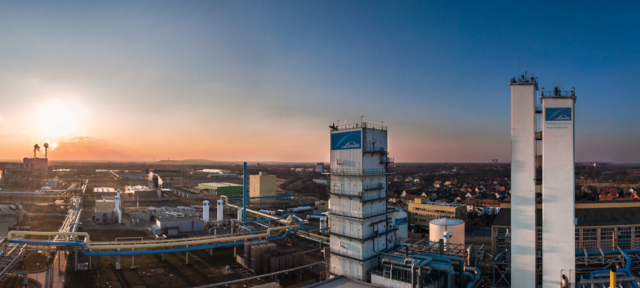Hydrogen in Leuna: The success story continues

Gray hydrogen is produced from fossil fuels. In most cases, natural gas is steam-reformed into hydrogen and carbon dioxide (CO2). The resulting carbon dioxide is vented to the atmosphere.

Blue hydrogen is similar to gray hydrogen except the carbon dioxide is captured and stored instead of being vented. This is known as carbon capture and storage, or CCS. Possible storage sites include disused oil and natural gas wells.

Turquoise hydrogen is produced by methane pyrolysis, which involves the thermal cracking of methane. This reaction takes place in the absence of oxygen, creating only solid carbon instead of carbon dioxide. For the process to be truly CO2-neutral, a high-temperature reactor must use renewable energy. In addition, the carbon formed must not be burned. Instead, it must be stored or used in the construction industry, for example.

Green hydrogen can be produced in two ways. One method is water electrolysis, where the water is split into oxygen and hydrogen. The other method is steam-reforming biomethane using green electricity, i.e., energy exclusively from renewable sources. With both methods, the CO2 footprint is zero.
